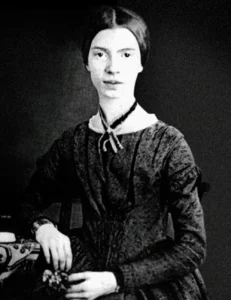Emily Dickinson: Emily Dickinson, the iconic American poet, remains one of the most enigmatic literary figures in history. Known for her reclusive lifestyle and her unconventional approach to poetry, Dickinson’s work continues to captivate and inspire readers and scholars alike. In this article, we will explore ten intriguing facts about Emily Dickinson that shed light on her life, her poetry, and her enduring legacy.
1. A Life of Seclusion
Emily Dickinson was famously reclusive, spending the majority of her life in her family’s home in Amherst, Massachusetts. She rarely left the house and developed a reputation as a mysterious and eccentric figure in her community.

2. Over 1,800 Poems
During her lifetime, Emily Dickinson wrote an astonishing 1,789 poems. However, the vast majority of her work was not published during her lifetime. It was only after her death that her poetry was discovered and brought to light.
3. Unconventional Punctuation and Capitalization
Dickinson’s poetry was characterized by her unconventional use of punctuation and capitalization. She often used dashes, ellipses, and irregular capitalization, creating a unique and distinctive style that sets her apart from her contemporaries.
4. Themes of Death and Immortality
Many of Dickinson’s poems explore themes of death and immortality. Her fascination with mortality and the afterlife is a recurring motif in her work, reflecting her own contemplative and introspective nature.

5. A Deep Love of Nature
Despite her reclusive lifestyle, Emily Dickinson had a profound love of nature. Her poems frequently reference the beauty and symbolism of the natural world, demonstrating her deep connection to the environment around her.
6. Enigmatic Correspondences
Dickinson maintained a significant correspondence with various friends and acquaintances through letters. These letters provide valuable insights into her thoughts and personality, but they also reveal her penchant for cryptic and playful language.
7. Literary Influences
Dickinson was an avid reader and drew inspiration from various literary sources. She was particularly influenced by the works of William Shakespeare, the Brontë sisters, and the Bible. Her writings often allude to these sources and demonstrate her deep appreciation for literature.
8. Herbarium, a Botanical Passion
In addition to her literary pursuits, Emily Dickinson had a keen interest in botany. She collected and documented an extensive herbarium, a collection of preserved plants. Her botanical studies showcased her meticulous attention to detail and her dedication to various intellectual pursuits.
9. A Legacy of Mystery
The poet’s reclusive lifestyle, unconventional punctuation, and cryptic language have all contributed to her enduring mystique. Scholars and readers continue to debate the meaning and interpretation of her poems, making her work a subject of ongoing literary fascination.
10. Posthumous Fame
Emily Dickinson’s poetry was not widely recognized during her lifetime, but she has since become one of America’s most celebrated and studied poets. Her unique and innovative approach to poetry, coupled with the themes she explored, have solidified her status as a literary icon.

Conclusion
Emily Dickinson’s life and work are marked by a compelling mix of mystery, innovation, and depth. Her unconventional style and profound themes continue to captivate readers and scholars alike, making her one of the most significant poets in American literature. As we delve deeper into her life and writings, we gain new insights into the brilliant mind behind these 1,800 poems and the lasting legacy she left for generations to come.